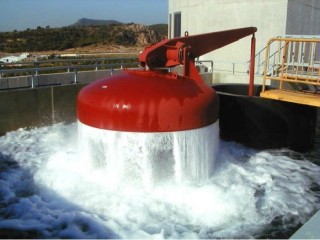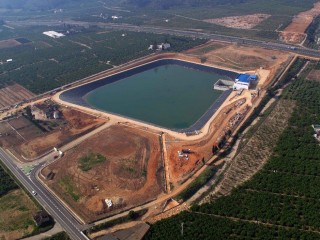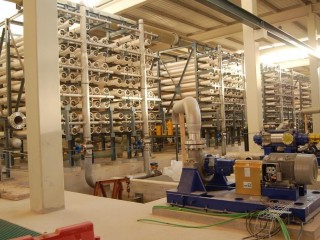El abastecimiento de agua potable para su uso por la población es uno de los principales retos a los que se enfrenta la Humanidad, al tratarse de un recurso natural escaso en su estado de potabilidad.
Since the demand for water has increased over the years, managing its purification and supply implicates public administrations in a growing spiral of costs, the challenge being to manage the resource in a way that contributes to sustainable development.
Water supply and treatment
In Spain, demand for the supply of water for human use is estimated to range from 160 to 180 litres per person per day. Activity in this sector is increasing, not only due to urban growth but also due to the demands on quality and purification of wastewater and the associated National Sanitation and Purification Plan, which has resulted in the entry into service of numerous Wastewater Treatment Plants throughout the country. It is estimated that currently 95% of the Spanish population is connected to a purification system.
Estimates for the country as a whole indicate an urban water supply of 3,730 hm3 per year and a treated wastewater volume of 4,450 hm3. The difference is justified by the facts that, although not all the water supplied ends up in a canalized drain to the wastewater treatment plant, the plant also receives rainwater and other effluents. The energy associated with these treatments is estimated at an electricity consumption of 447 GWh/year in pumping for the collection, supply and distribution of urban water, and an electricity consumption of 2,225 GWh/year in wastewater treatment.
Reductions in energy consumption will be achieved through reducing water losses in the supply networks, not only by improving existing networks but also by implementing telecontrol systems to systematically detect hidden leaks; by reusing purified water for municipal consumption (irrigation of gardens and street cleaning) and by optimising the pumping systems to adapt to the variations in water supply pressure and demands.
Regarding wastewater treatment plants, the installations are experiencing an improvement in their efficiency due to technological innovation and the aggregation of flows towards larger joint facilities. Small treatment plants, which usually lack aeration control systems and whose design is based on mechanical robustness which implies a certain oversizing of electromechanical equipment, have a relatively high unit consumption, of the order of 50 kWh/inhabitant year. In large wastewater treatment plants, design, sizing and control are optimized to achieve energy consumption close to 20-30 kWh/inhabitant year.
Desalination of seawater
Although different desalination technologies have different energy consumptions, in Spain reverse osmosis predominates among existing installations, and this trend also seems to be being followed for new installations.
The most recent data on the production of desalinated water in Spain establishes a range of between 1.5 and 2 hm3/day for the almost 1,000 existing desalination plants (the variation in demand is affected by the annual rainfall). Assuming the minimum production of 1.5 hm3/day, and an average energy consumption of 4.3 kWh/m3 for osmosis, a figure to which another 0.6 kWh/m3 must be added for the collection and pre-/post- treatment of the water, the total energy consumption is 7.3 GWh/day and the demand power is 306 MW. Estimating a production of 24 hours/day for 335 days/year, the electricity consumption for desalination becomes 2,460 GWh /year.
Measures such as the replacement of current osmosis membranes with other more efficient models, or the substitution of current turbine reject stream energy recovery equipment with isobaric brine pressure exchange chambers are examples of reforms that will allow reductions in the consumption of electrical energy for processes in current facilities.
This will not prevent the consumption of energy from this subsector continuing to grow, based on Spanish municipalities’ growth in infrastructure and their needs for drinking water, particularly those located on the Mediterranean coast and the islands.
Technical guide to efficiency in water facilities. Technical guide written by AQUA ESPAÑA and focused on the characteristics of water and its possible interactions in the networks and installations through which it runs, from open hot or cold water circuits to cooling towers, or closed high or low temperature circuits (solar or radiant floor).





